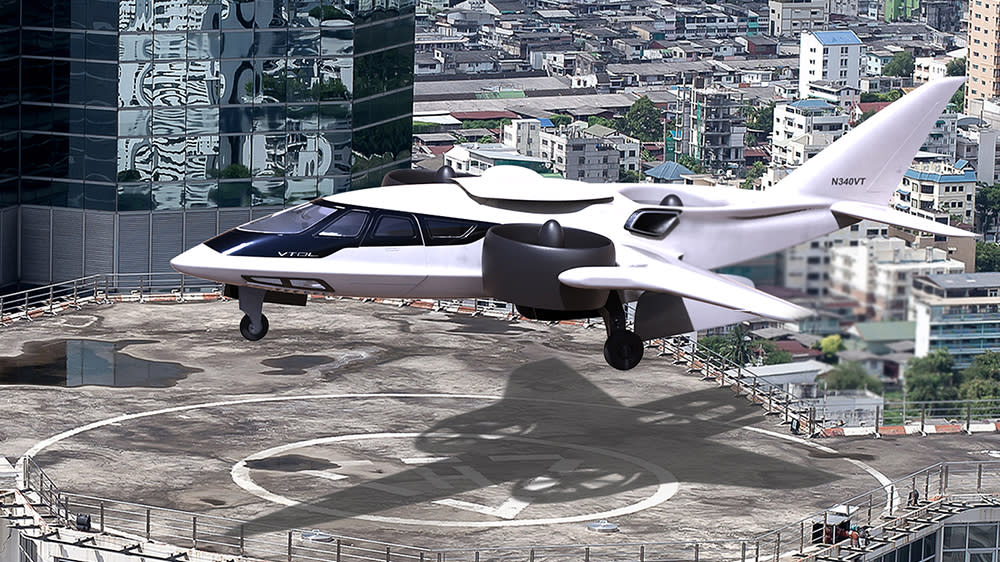The TriFan 600 Could Become One of the Coolest and Quickest Ways to Fly

XTI Aircraft doesn’t want you to confuse the TriFan 600, the vertical takeoff and landing (VTOL) aircraft that it’s developing, with a tiltrotor such as the Leonardo AW609. According to XTI, a Denver company that was established in 2012, a tiltrotor is a essentially a helicopter with wings, whereas XTI’s aircraft is essentially a business jet with VTOL capabilities.
What’s the difference? Performance, says XTI.
Related stories
Which of These 5 GoFly Prize Winners Do You Want to Fly?
VistaJet Reveals Its Pet Project for Business-Jet Travelers
The World's Most Scenic Airport Is Probably Not Where You Expect It To Be
According to the projected capabilities of the two aircraft, the TriFan 600 will fly faster, farther and higher than the AW609. It will have a maximum cruising speed of 345 mph, a range of 1,380 miles and an operating ceiling of 29,000 feet, which should put it above any bad weather. (The AW609 numbers are 316 mph, 1,243 miles and 25,000 feet.)
Truth be told, the TriFan 600’s projected capabilities are more comparable to those of a turboprop than a business jet, but it will be able to reach 29,000 feet in only 11 minutes, and it will get up to speed in just 90 seconds, according to XTI. It also will be capable of landing on and taking off from any helipad-sized paved surface.
The TriFan 600 will seat four passengers in a pressurized cabin that, XTI says, will offer the same level of comfort as an airliner’s business class. A fifth passenger can sit in the cockpit, next to the pilot. Baggage space won’t be abundant, but there will be enough room for passengers to bring overnight bags.
Also, notes XTI, the TriFan600 will likely be a lot cheaper than Leonardo’s nine-seat tiltrotor. The estimated price of the TriFan 600 is $6.5 million; according to reports, the AW609, which has been in the works for more than two decades, could cost as much as $20 million.
XTI, which stands for “extended technology and innovation,” evolved from the helicopter company AVX Aircraft, which was established more than a decade ago with the goal of developing a more compact helicopter, one without a tail or tail rotor, and with ducted fans. XTI was formed to work on a fixed-wing aircraft with ducted fans—specifically, one in each wing that rotates to enable the switch from vertical to horizontal flight and back. A third, fixed-position fan is mounted in the rear of the aircraft’s carbon-fiber fuselage. It’s used only for takeoffs and landings and for hovering. When the aircraft is moving horizontally, doors on the fuselage slide closed and cover the fan.
As of March, XTI had built a 65 percent scale prototype of its aircraft and was awaiting delivery of the electric hybrid engine that will power the fans. The company has been conducting systems tests and ground tests with the prototype and was planning to begin test flights once the engine is installed. XTI, which introduced the TriFan 600 in concept form at the 2017 National Business Aviation Association (NBAA) convention, says it already has received 76 orders for the aircraft. If all goes according to plan with the testing and certification process, the company has said, it expects to begin producing and delivering the TriFan 600 by 2023.
Sign up for Robb Report's Newsletter. For the latest news, follow us on Facebook, Twitter, and Instagram.

